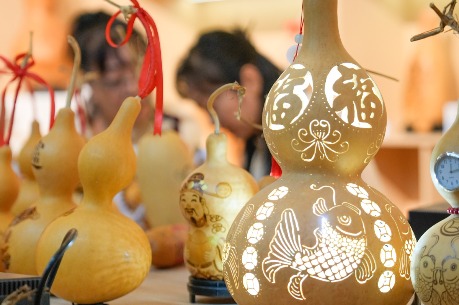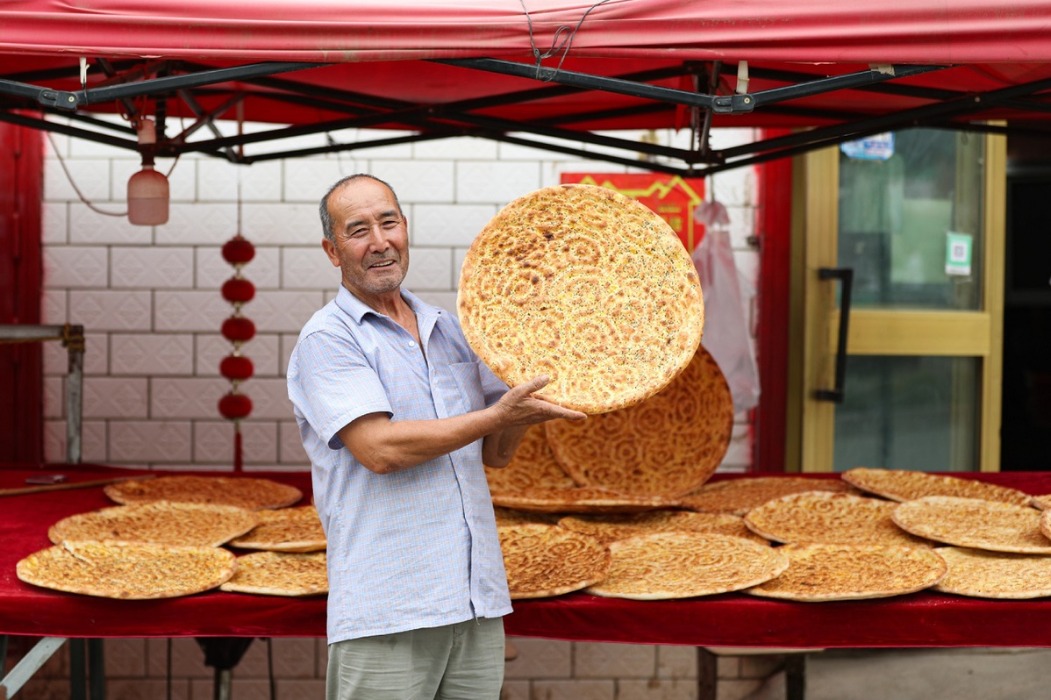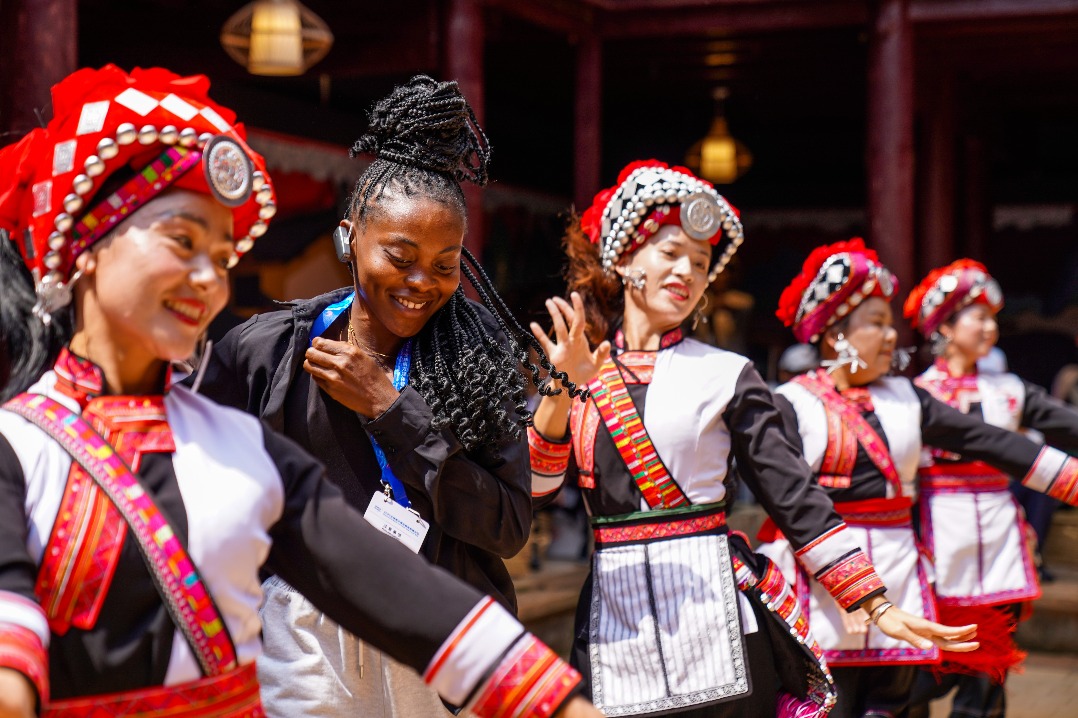Historic prison site in Shanghai to get new look
Former jail premises may be repurposed as hub for retail, education and leisure

The Shanghai Bureau of Justice and the Shanghai Prison Administration announced the relocation of Shanghai's Tilanqiao Prison in early July, with the successful transfer of all inmates.
The original site, which was built in 1901, was located in the downtown Hongkou district. The new site is in Qingpu district on the city's outskirts. The Tilanqiao Prison name will be retained after the relocation, authorities said.
There had been calls for a number of years for the prison to be relocated due to it being too close to a dense urban area.
Now that the prison has been emptied, developers must consider what is next for the site that retains its exquisite architecture and profound history.
Officials from the Shanghai Prison Administration said the land and the buildings related to the prison will be handed over to the district government, which is still working on an exact and detailed plan of how to revamp and reuse the site.
In March, Luo Yihong, director of the Hongkou district planning and natural resources bureau, said that after ensuring the buildings are protected, functional planning will begin.
The site covers an area of 1 square kilometer, and according to the prison administration, was once the largest prison in the Far East.
"We'll press ahead with the protective development of the Tilanqiao area this year. We'll work together with the Shanghai Planning and Natural Resources Bureau to form a special team, invite top-notch technical support teams and carry out in-depth research on how to empower the area with new functions, business forms and vitality," said Luo at a meeting of the standing committee of the Hongkou district people's congress, the district-level legislature.
"We'll conduct research to see the possibility of building the area into a zone attracting flagship stores and new product launches by domestic and international brands. No matter what the exact functions will be, we aim to build the area into an international community that integrates world-class cultural centers, vibrant and beautiful streets and low-carbon and healthy communities," he said.
Local media outlet Xinmin Evening News reported that the main buildings of the former prison may be renovated into a museum themed on Red culture and legal education.
For the other parts of the former prison, there exist many possibilities for transformation. In light of its characteristics, they include rebuilding it into a place for the design, testing and display of high-end cultural products such as diamonds. There are successful cases overseas where former jails have been turned into hotels, according to the report.
Tilanqiao Prison officially opened in May 1903. It underwent renovation and expansion and formed its current layout and scale in 1935. The existing buildings were built between 1917 and 1935.
In 2013, Tilanqiao Prison was approved by the State Council, China's Cabinet, as a national key unit for cultural relics protection. The following year, it was included in the country's list of national-level memorial facilities related to the Chinese People's War of Resistance against Japanese Aggression (1931-45).
The prison covers an area of more than 40,000 square meters, equivalent to the size of approximately five-and-a-half standard soccer fields. There are 10 prison buildings of four to six stories, which contain nearly 4,000 prison cells. There are also workshops, hospitals, kitchens and office buildings. Only male convicts were jailed there.
"If a convict was sentenced to 10 years' imprisonment, even if he was moved into a new cell on a daily basis from the first day of imprisonment, there would still be some cells that he would not have stayed in on the day of his release," said Shi Qiang, deputy director of the administrative office of the Shanghai Prison Administration.
Tilanqiao Prison lived up to its name as the "No 1 prison in the Far East". Its capacity was once more than 8,000, larger than India's Mumbai Prison and Japan's Sugamo Prison.
Shi Jinxiu, a police officer at the administrative office of Tilanqiao Prison, said that even up until its relocation, the prison still accommodated the largest number of prisoners in Shanghai. Prison officers shouldered colossal pressure in the relocation work.
"Several authorities worked together to make sure that the entire process of the relocation went safely and smoothly," she said.
The prison is surrounded by a 5-meter wall, and has more gates than most other prisons in the country. Before entering the prison area from the administrative area, people have to pass through four gates.
In the early days before the mid-1940s, the prison was managed by the British, and the individuals put behind bars were Chinese in the Shanghai International Settlement.
Since 1935, foreign prisoners have been detained there as well. After the end of World War II, Tilanqiao Prison was the first place where Japanese war criminals were tried after China's victory in the Chinese People's War of Resistance against Japanese Aggression (1931-45), and it was also the place where war criminals were hanged.
After using the name Shanghai Prison for decades, the prison was renamed Tilanqiao Prison in 1995. Gradually, Tilanqiao became synonymous with prison among locals.
In 2012, several city-level political advisers, including Mao Jialiang, an expert in urban planning, suggested adjusting the function of the site of Tilanqiao Prison.
"The existence of Tilanqiao Prison restricts the development of the North Bund area, and is not conducive to the transformation and development of the area," said Mao.
The following year, several other political advisers submitted another proposal to urge the adjustment of the functions of Tilanqiao Prison to start as soon as possible.
In May 2013, in a reply to the proposal, the Hongkou district government said that after the relocation of Tilanqiao Prison, the original site might be used as a cultural complex with distinctive characteristics and linkage with the surrounding areas.
Earlier this year, district-level legislators made several motions to urge the accelerated urban renewal in the Tilanqiao historical area. They mentioned that there is a compound with lanes of garden houses, which used to accommodate a large number of Jewish people during and after World War II. The buildings, including a synagogue, residences, shops and schools, have unique historical and cultural value.
"The most important resource of the Tilanqiao historical area is its profound historical and cultural value. The experience of the Jewish people in Shanghai closely linked Shanghai's history and culture with a catastrophic event in human history, and enhanced the cultural value of Shanghai," they said in the motion.
"While designing differentiated renovation plans for buildings in the area according to their historical value, we suggested further playing up the cultural and historical significance of the area when making the entire plan so that we may create a high-energy cultural hot spot and a new landmark in the city," they added.
zhouwenting@chinadaily.com.cn
- Environmental inspection teams release findings
- Liaison office of central govt spokesperson hails Macao SAR 8th Legislative Assembly election
- China discovers highest-altitude Qin Dynasty engraved stone on Qinghai-Tibet Plateau
- Traditional culture enthusiasts experience handicraft exchange at museum in China's Xinjiang
- Promoting intl rule of law for fairer global governance
- Sovereign equality is anchor of fairer global governance





































